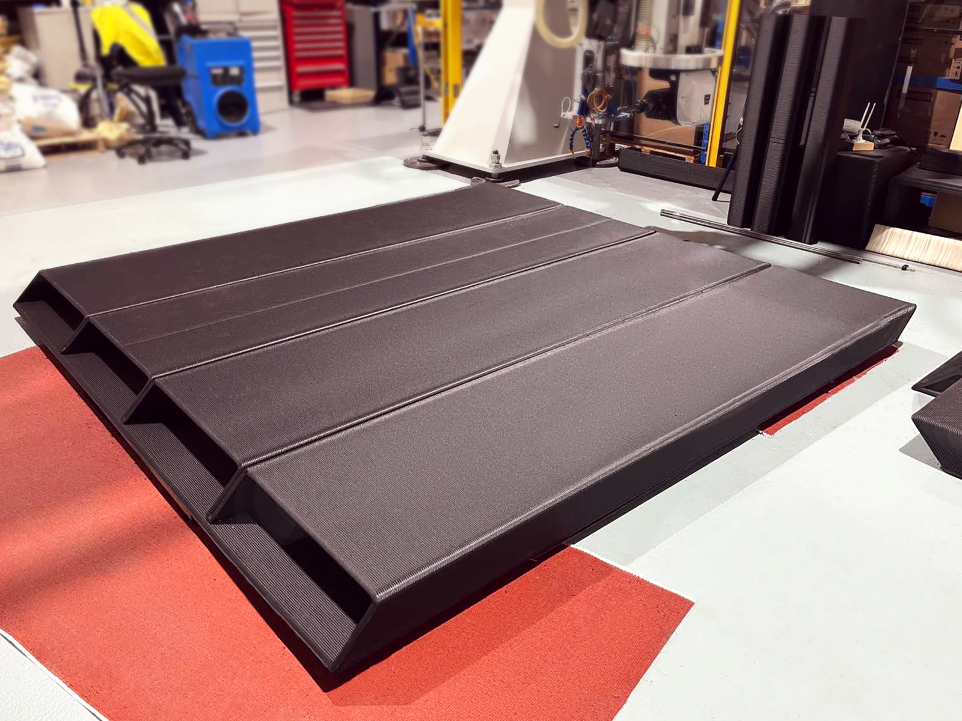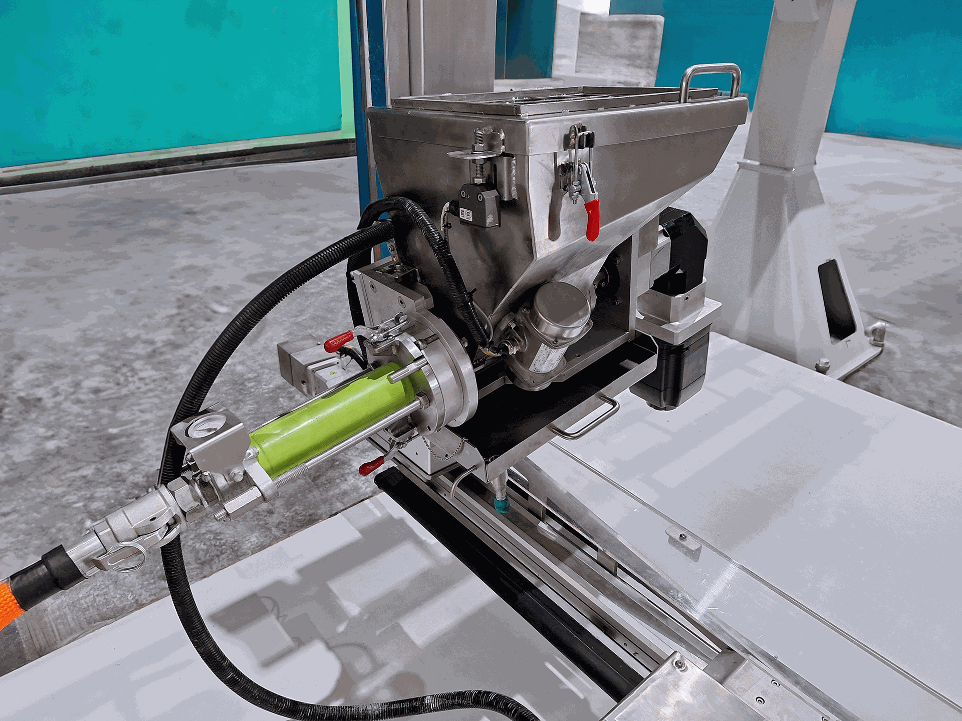Many customers are new to large format 3D composite or concrete printing and would like to understand the commercial viability and technical feasibility and requirements of this process.
Customer generally fall into the following categories:
Existing manufacturers who have their own parts to make and want to assess potential advantages to make with large format 3D printing and or milling, as compared to conventional manufacture.
Companies and start-ups new to additive manufacture who want general advice on what sort of parts they should look to manufacture with large format 3D printing, as a prelude to investigating the market for possible own customer opportunities.
Manufacturers of thermoplastic parts who want to investigate new materials or develop ways to recycle materials in additive applications.
CNC Design offers a multistage approach to this. Typically this involves a combination of material testing, part program development, trial printing of a part or some testing of this. In any case the steps need to be assessed and agreed before going to the next stage (G0/NO GO).
Many customers are new to large format 3D composite or concrete printing and would like to understand the commercial viability and technical feasibility and requirements of this process.
Customer generally fall into the following categories:
Existing manufacturers who have their own parts to make and want to assess potential advantages to make with large format 3D printing and or milling, as compared to conventional manufacture.
Companies and start-ups new to additive manufacture who want general advice on what sort of parts they should look to manufacture with large format 3D printing, as a prelude to investigating the market for possible own customer opportunities.
Manufacturers of thermoplastic parts who want to investigate new materials or develop ways to recycle materials in additive applications.
CNC Design offers a multistage approach to this. Typically this involves a combination of material testing, part program development, trial printing of a part or some testing of this. In any case the steps need to be assessed and agreed before going to the next stage (G0/NO GO).
Stage 1: What Products can we typically make with large scale additive?
For new customers for CNC Design’s VSF systems we suggest an introductory session with one of our customer application team members. This will include:
· What do you think you want to make – moulds, non-structural parts or structural parts?
· What are the applications for these parts?
· Brief overview of our VSF System models (thermoplastic or concrete) and main machine elements.
· Overview of typical shapes which can be printed with vertical or 45 degree printing
· Overview of printing materials and pricing (thermoplastic only).
· How do you calculate the time and material cost to make a part?
· Sustainability as a driver for large scale additive manufacture.
· Our comments and suggestions on what you are trying to do.
Decide if it makes sense to continue to Stage 2 or to do some more investigation first.
Stage 2: Analysis for making a specific part or material
So, you have in mind a part, or a material you want us to develop, and wish to work together with us on understanding the potential costs and processes involved. Typically, this stage looks in depth at the part requirements depending on use case, environment etc. Based on this we will investigate possible print and machining strategies or possible materials. Our aim is to have enough information to enable us to estimate possible future labour and material costs in a Pilot Project. We also define a likely timeframe and project plan for the next stage.
Decide if it makes sense to continue to Stage 3 or to do some more investigation first.
Stage 3: Pilot Project
OK so now we have discussed, and both agreed it makes sense to move to a Pilot Project. It includes a structured approach with costs and GO/NOGO steps to minimise risk for both parties.
Customers who are looking to compare the cost of a Pilot Project with actual part manufacturing cost need to understand that there will be up front engineering and development costs for the first few parts as we also have to learn, with you, the best way to make your part. We may need to try different print strategies, try alternative materials or other steps.
Entering into a Pilot Project can give you and your company a better understanding of large scale 3D printing, as a basis for evaluation of purchasing a VSF system or our Innomerix materials.
Stage 1: What Products can we typically make with large scale additive?
For new customers for CNC Design’s VSF systems we suggest an introductory session with one of our customer application team members. This will include:
· What do you think you want to make – moulds, non-structural parts or structural parts?
· What are the applications for these parts?
· Brief overview of our VSF System models (thermoplastic or concrete) and main machine elements.
· Overview of typical shapes which can be printed with vertical or 45 degree printing
· Overview of printing materials and pricing (thermoplastic only).
· How do you calculate the time and material cost to make a part?
· Sustainability as a driver for large scale additive manufacture.
· Our comments and suggestions on what you are trying to do.
Decide if it makes sense to continue to Stage 2 or to do some more investigation first.
Stage 2: Analysis for making a specific part or material
So, you have in mind a part, or a material you want us to develop, and wish to work together with us on understanding the potential costs and processes involved. Typically, this stage looks in depth at the part requirements depending on use case, environment etc. Based on this we will investigate possible print and machining strategies or possible materials. Our aim is to have enough information to enable us to estimate possible future labour and material costs in a Pilot Project. We also define a likely timeframe and project plan for the next stage.
Decide if it makes sense to continue to Stage 3 or to do some more investigation first.
Stage 3: Pilot Project
OK so now we have discussed, and both agreed it makes sense to move to a Pilot Project. It includes a structured approach with costs and GO/NOGO steps to minimise risk for both parties.
Customers who are looking to compare the cost of a Pilot Project with actual part manufacturing cost need to understand that there will be up front engineering and development costs for the first few parts as we also have to learn, with you, the best way to make your part. We may need to try different print strategies, try alternative materials or other steps.
Entering into a Pilot Project can give you and your company a better understanding of large scale 3D printing, as a basis for evaluation of purchasing a VSF system or our Innomerix materials.
Want to know more?
Want to know more?



